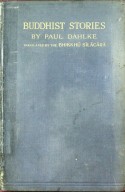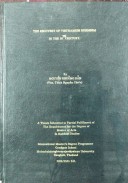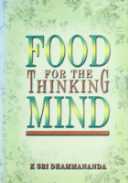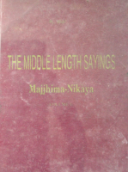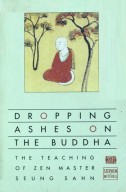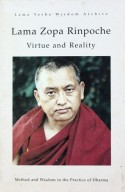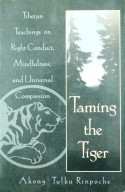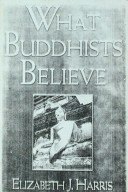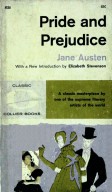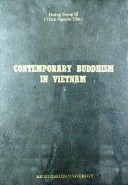Tìm Sách
Sách tiếng Anh-English >> The Hevajra Tantra
Thông tin tra cứu
- Tên sách : The Hevajra Tantra
- Tác giả : D. L. Snellgrove
- Dịch giả :
- Ngôn ngữ : Anh
- Số trang : 178
- Nhà xuất bản : LONDON Oxford University Press
- Năm xuất bản : 1989
- Phân loại : Sách tiếng Anh-English
- MCB : 1210000004967
- OPAC :
- Tóm tắt :
CONTENTS
NOTE ON THE TEXTS
SRIHEVAJRADAKINIJALASAMVARAMAHA-TANTRARAJA AND THE TIBETAN TRANSLATION
PART I. VAJRAGARBHABHISAMBODHIH
- Sarvatathagatakayavakcittahevajravajrakulapatalah prathamah
- Mantrapatalo dvitiyah
- Sarvatathãgatakãyavãkcittahevajradevatãpatalas tjtiyah
- Abhisekapatalas caturthah
- Tattvapatalah pancamah
- Caryãpatalah sastah
- Chomapatalah saptamah
- Yoginĩcakro nãma mahãyoginĩnãm melapakapatalo’stamah
- Visuddhipatalo navamah
- Abhisekapatalo dasamah
- (The last chapter is unnamed and unnumbered)
PART II. MAHÃTANTRARAJAMÃYA
- Homanirnayapratisthapatalah prathamah
- Siddhinirnayapatalo dvitlyah
- Hevajrasarvatantranidanasandhyabhasapatalas tjtiyah
- Hevajrasarvatantramudranapindarthapatalas caturthah
- Hevajrabhyudayapatalah pancamah
- Hevajrapatavidhanapatalah sastah
- Bhojanapatalah saptamah
- Vineyapatalo’stamah
- Mantroddhãrapatalo navamah
- Japapatalo das amah
- Sahajarthapatala ekãdasah
- (The last chapter is unnamed and unnumbered)
YOGARATNAMALA, a commentary on the Hevajra-tantra by KANHA
Vocabulary: Tibetan-Sanskrit-English
Sanskrit-Tibetan
NOTE ON THE TEXTS
In the preparation of the texts I made primary use of three Sanskrit manuscripts, all Nepalese copies of the nineteenth century: one belonging to Professor Tucci (A), one to the Cambridge University Library (B), and one to the Asiatic Society of Bengal (C). I have also noted the existence of the three other similar manuscripts obtained by Brian Hodgson, two of which are in the Bibliothèque Nationale and one in the Royal Asiatic Society, London. Of the last of these I have made some use. The Tibetan translation in the Kanjur and the translations of early Indian commentaries preserved in the Tenjur were my chief guides throughout. I have since compared my text with an earlier Sanskrit manuscript (about fifteenth century) in the private library of Kaisher Shamsher in Kathmandu.
Of the early commentaries a fine Sanskrit manuscript of the Yogaratnamãlã by Kanha is preserved in Cambridge. Of the 70 folios only two, 29 and 30, are missing. It is written on palm-leaf in an old Bengali script and dated the 39th year of King Govindapala. This king seems to have been the last of the Pãla dynasty and ruled in the second half of the twelfth century. In the Bir Library in Kathmandu there is another incomplete manuscript of 26 folios. It has been possible by means of this to supply most of the missing section of the Cambridge MS. Other small omissions and the few errors of the Cambridge MS. have been made good by means of the Tibetan Translation (Narthang Tenjur rgyud, xvr, ff. 1-73).
Field-Marshal Kaisher Shamsher kindly allowed me the free use of his library and I have since found there incomplete palm-leaf manuscripts of the commentaries of Saroruha and Vairocana, which are quoted in my notes from the Tibetan translations. There is a second and fuller manuscript of Vairocana’s commentary in the Bir Library (formerly known as the Durbar Library), but permission to photograph it was refused. For this work of mine I have relied upon the Tibetan translations of the commentaries except in the case of the Yogaratnamalã; in any case it would be impracticable to make running references to fragmentary unpublished texts.
Also in the Field-Marshal’s library there is one other commentary, the Hevajrapanjika by Srĩ-Kamalanãth, complete in 23 folios. This work does not seem to have been translated into Tibetan, for it is missing from the Tenjur. Nor does this Kamala or Kamalanãth appear to be known in Tibetan tradition. There is a prima facie case for identifying him with Kampala, who is named with Saroruha as an originator of the Hevajratantra (see Part I, p. 12), for we would expect him to have produced a commentary. This short work might well have been included in this edition, had it been found in time.
The Chinese version of the tantra (Taishõ edition no. 892) appears to be based on the same Sanskrit original as the Tibetan, but the translator clearly found difficulty in rendering the more obscure parts as intelligible Chinese. Thus this version, rather than assisting towards a better understanding of the Sanskrit, would seem to provide new material for a study of its own. I have appealed to it on one or two occasions, but its testimony is really rendered superfluous by the far greater number of reliable Tibetan readings.
In mentioning the texts, I take the opportunity to thank Professor John Brough, who assisted me much with the reading of the manuscripts and provided me with many helpful ideas, and Professor Walter Simon, who assisted me with the Chinese version. Nor would I fail to mention those Tibetan translators of long ago, without whose labours we should’ be able to make little advance in Buddhist studies. Every one of their texts is an extraordinary linguistic feat, for no other translators have ever succeeded in reproducing an original with such painstaking accuracy. Relying upon them alone, there is no reason why the exact contents of any Buddhist text should not become known to us. A Tibetan translation of a text and a commentary, let alone five commentaries or more, is of far more value for understanding a work than a Sanskrit manuscript alone. It is on these translations that I have largely relied.
When one is confronted with the task of providing a satisfactory translation of a hitherto unedited Sanskrit work, the normal course of procedure should be first to establish a reliable text by a careful collation of the available manuscripts, and then to interpret this direct in accordance with the accepted rules of grammar and syntax. Guidance may be sought from secondary versions, either translations or commentaries, but such help one would expect to be of a subsidiary nature, for the original text should always be the chief authority. Such a statement of method might seem quite superfluous, were it not for the fact that it has been found necessary in dealing with the present text to dispense with the orthodox and logical method of procedure, and reverse the whole process in a manner that at first might seem unreliable and dangerous. Indeed it must be confessed that the general method has been to first ascertain the intended sense of the text and then edit the manuscripts accordingly. The one excuse for this method is that this is the most certain method of procedure, when one is dealing with manuscripts so manifestly rife with error as are the available manuscripts of the Hevajra-tantra. Nor on second thoughts should such a method seem necessarily unreliable, where the primary concern is to learn the contents of the work and establish its relationship to a general cultural background. For this can still be done, even though the actual text may remain imperfect.
For ascertaining the intended sense of the text the most reliable version is the Tibetan translation. This reproduces the Original text at a far earlier stage than the nineteenth-century Nepalese MSS. The passages in apabhramia, for example, are transliterated as such, while in the manuscripts they appear partly sanskritized, and there are several instances where the sense suggested by the Tibetan is to be preferred in spite of the contradictory evidence of the manuscripts. Likewise the many commentaries, which with the exception of the Yogaratnamãlã are quoted from the Tibetan, refer to versions of the text as known from the ninth to eleventh centuries, and 80 they, too, in any matter of doubt must be given precedence over the extant manuscripts. In fact these two powerful aids, Tibetan translation and commentarial works, are in themselves sufficient to provide us with a satisfactory translation of the whole work, while the manuscripts taken alone are not. It would seem reasonable therefore, that the actual editing of the Sanskrit text should follow rather than precede our understanding of it. In final justification of this method it remains necessary to illustrate just how these manuscripts should be so unreliable.
In order that a text should serve as a reliable guide, it is necessary that the editor should first be able to edit with some consistency, and in order to do this he must feel confident that the original text which he is attempting to restore was a correct text, that scansion, grammar, and syntax were originally regular. In a choice between several readings he would then logically choose the one that was correct and in restoring corrupt passages he would pay full regard to regular scansion. But in the case of the Hevajratantra there can be no such confidence. More than a hundred lines are quite irregular, and although they clearly represent slokas of a kind, it is impossible to see how many of them can ever have been anything but irregular. Thus where there is a choice of reading, the original one is by no means necessarily the one that would permit correct scansion. Likewise, in the case of grammar and syntax, there seems to be complete carelessness in the matter of endings and irregularities of a kind that would be insufficiently explained by the ignorance of scribes. They have certainly added to the confusion, as may be seen by a comparison of the extant manuscripts, but their distortions are of a kind that can only suggest error based upon error. Since this is so, it is clearly impossible to hope to provide a satisfactory edition of such a text. One’s aim, of course, should be to produce a version as close to the original as possible, but there is a great difference between attempting to restore an originally perfect text and an originally imperfect text, for in the latter case we are deprived of the chief measure of success, namely the correctness of the restored version.
In our case therefore we have had to be content with the next best thing, namely a text that accords with the required sense as it may be ascertained from the Tibetan translation and the several commentaries. We may then accept the irregularities of scansion, when it seems that they could not be otherwise, and the irregularities of grammar, in 80 far as they do not render impossible the required sense. Such is the principle I have tried to follow, but it is a principle that is inevitably inconsistent in application, for another might well insist that many of the irregularities retained still render impossible any satisfactory translation. Some of these, however, occur with sufficient regularity to warrant their acceptance, some just cannot be otherwise, while some, which are altogether absurd, have been tentatively corrected.
Thus for mere example the form -rũpinam appears as neuter nominative (II. iv. 40, 55; vii. 8) and is attested in all manuscripts.
ăkrti (II. iii. 4) is treated as neuter and this false attribution of gender is confirmed by three neuter forms in the same line.
The mixture of nominatives and instrumentals (II. iii. 54) is attested by all manuscripts and should clearly be allowed to remain, as they have every appearance of being original.
Barbarities of this kind are fundamental to the text, as is also the continual mixing of the endings -h and -m. In editing, one can but choose whichever seems the more correct of the two, but those who once recited this work do not seem to have bothered, while the scribes often write both the visarga and the anusvãra.
But there are cases where some deliberate alteration of the text is necessary in spite of the manuscripts’ unanimity in error.
Thus they all have: sabdas ca… laksayet and one must make an obvious correction to sabdan ca (II. iv. 14).
They all confirm the reading tarjayantam surăsurãti (II. V. 27), but the required sense can be gained only by correcting to tarjayan at….
They all read: tatra tnadhye ’ham vidyãt (II. V. 7), and one corrects to: …vidyate, wondering meanwhile whether one should improve still further with… vidyeya.
Elsewhere we may reject all the alternatives offered, and supply the logically correct form. Thus instead of devati I devati I devatim we have written devatvr (II. iv. 66), and katham instead of katamam (II. vii. 1).
Some corrections have been more bold, and while they seem necessary if the required sense is to be made clear, there can be no guarantee whatsoever that they represent the original text. See I. V. 6; vi. 9; II. V. 70.
Where the metre can be easily regularized this has normally been done, but in some cases I have amended the text against the metre, e.g. I. vii. 9; II. vi. 6; ix. 7. Such irregularity is probably inherent (cp. I. vi. 24).
The language need not be graced by the term Buddhist Sanskrit. It is just bad Sanskrit. The only special grammatical form worthy of note is the 3rd sing. opt. karet. The form of the gerund, normally reserved for compound verbs, is used with several simple vérbs: vãdya, grhya, pujya. There are six cases of double sandhi.
The manuscripts themselves have no special features. Consonants are regularly doubled after -r, but in our edition they are given as single.
Square brackets [ ] have been used to indicate the desirability of omitting a word or passage which is nevertheless attested by all manuscripts, or which has some other claim to consideration as an original reading. Pointed brackets () indicate the desirability of inserting a word or passage, usually for metrical reasons, for which no authority can be quoted from the manuscripts, Tibetan version or the commentaries. The critical apparatus does not show all the variant readings, so very many of which, especially in the case of B, are useless scribal blunders. A number of absurdities are, however, quoted as illustration of the nature of these manuscripts. The pagination given throughout the Hevajra-tantra refers to the Calcutta MS.
 Facebook
Facebook
 Google
Google
 Google+
Google+


